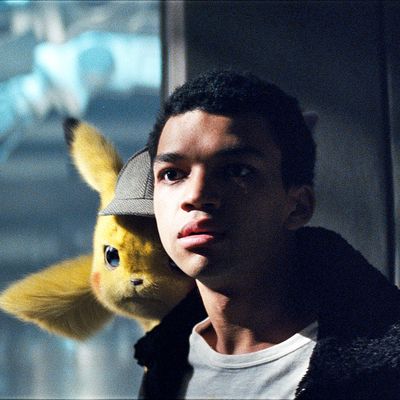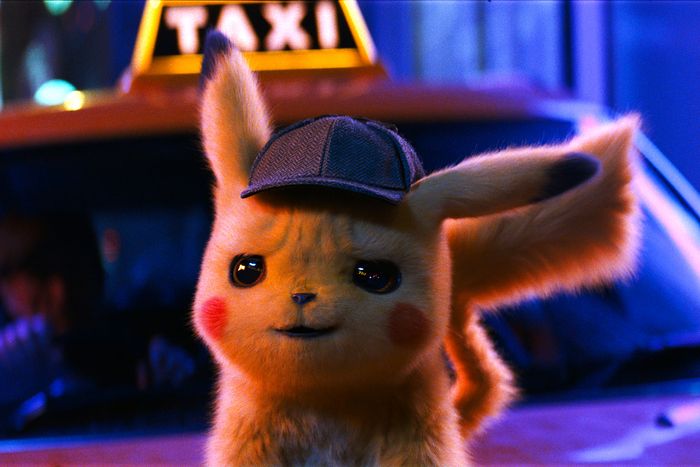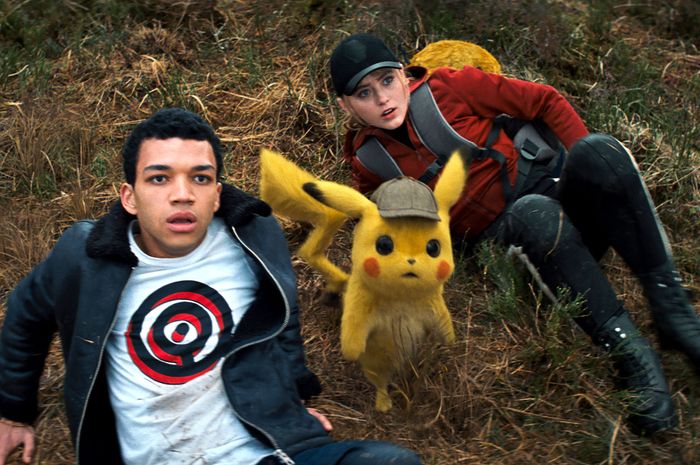
“We wanted to make it look like Blade Runner,” John Mathieson admits, rather immediately. “A bit shamelessly, in fact.”
The veteran cinematographer has earned Oscar nominations for Ridley Scott’s Gladiator and Joel Schumacher’s The Phantom of the Opera, along with blockbuster paydays from X-Men: First Class and Logan, but today he is talking about something else: Detective Pikachu, the noir spin on a 23-year-old franchise starring Ryan Reynolds as a caffeine-addicted electric mouse hell-bent on solving a good ol’ fashioned mystery.
Mathieson is the production’s secret weapon — which has, in multiple reviews and a parody video, already been compared to Scott’s neo-noir science fiction. He’s the one who insisted on shooting the tale of deerstalker-cap-wearing Pokémon on 35 millimeter film instead of digital video. Whereas the film snobs among us might mistake Detective Pikachu for a kiddie lark, a seasoned professional like Mathieson treated the Pokémon as seriously as its mother company intended.
“I always want to shoot on film,” Mathieson tells Vulture over the phone from his native England. “It’s quite often shot down by the studios because it seems that shooting on film is expensive, and that it’s easier on digital. But I don’t think that’s true at all. We’ve managed to work using film for a hundred years without calamity.”
Working on analog equipment, with its sensitive reels and filmstrips and exposure process, is tricky, in so far as it doesn’t allow for the same shortcuts digital technology does. “On video, you can just leave things running the whole time, maybe twice as long. You end up being able to shoot an hour more every day,” Mathieson explains. Fewer and fewer features shoot on film with every passing year, citing the steep costs and needless complications. But Mathieson, a veteran professional, is fighting the good film fight anyway.
“One of the things that film does best is replicate vivid colors, holds their integrity,” Mathieson says. “If you have a poppy red, digital can go toward a British postbox red … Film can hold those colors a lot better than digital can. We had the freedom to go for a really weird purple, to find an interesting shade of blue.”
Detective Pikachu is therefore a labor of 35 millimeter love, with every color in every scene judiciously selected from a richer palette than digital video could allow. Cyans, cerises, and fuchsias define a world populated by both human actors and CGI pocket monsters. As Reynolds’s CGI Pikachu and his human companion Tim (played by Justice Smith) tromp through the alleyways of Ryme City, they are drenched in shadows and grains that feel appropriately at home in the noir genre. The metropolis outside lights interior shots with a hazy neon glow that shifts hue every few seconds. In the end, Mathieson’s soft lensing is what makes Pikachu so darned cute, and not a dead-eyed lurker of the uncanny valley.
Speaking of the uncanny valley: Mathieson says he kept his shooting ratio — that’s the proportion of total raw footage to minutes used in the finished product — razor-thin, and rushed to meet extremely tight shooting deadlines. His system was so efficient that Detective Pikachu, which was still in principal photography at this time last year, arrived on schedule. When you ask Mathieson about the delays on the other live-action video-game movie, Sonic the Hedgehog, he can scarcely believe the film’s team is heading back to the drawing board. “We were really pushed,” he says of Pikachu. “We had a lot of post, but to create a whole new character? And little friends for him? I’m sure the producers are tearing the spikes out of the little hedgehog’s bum.”
Of course, Mathieson’s got some studio-system horror stories of his own. “Frames will be lit by committee. You’ll have people over your shoulder, looking at monitors, pointing at spaces to click and change,” he recalls. “Why wouldn’t they value [the director of photography]? They bring you in because they value your opinion — presumably, they want your look. So let the DP do the work of creating that look! Otherwise, you’ve got a flat, tweaked-with digital image.”
Nevertheless, he’s ultimately quite satisfied with the freedom he was afforded on Pikachu and the distinctive aesthetic he was able to achieve, which stands miles apart from the high-polish hollowness currently in vogue among the big-budget set.
“The proof’s in the pudding,” he says. “You look at these big Marvel films, these Avengers films, what have you, it’s quite often that all you’ve got in front of you is the talent on a green screen. We had real locations, real places. We did have CG animals, but they’re in the foreground or integrated into the background of a real environment. We were in dirty bars, the East End of London, not an airplane hangar covered in green sheeting and tracking markers with a camera on a crane. That’s just not that much fun, really.”



